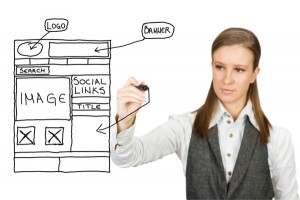 Driving traffic to a website is essential for keeping it active and ranked higher on the search engines, but once you get the traffic there, it’s important to keep the website user-friendly and appealing. Today’s Internet users don’t want to sit around and try to figure out a website design or where the pertinent information they’re look for is located – they want instant gratification and an eye-catching design. So how do you keep your web design user friendly? There are various ways to make your website interesting and informative for visitors so they stick around and see what you have to offer. Here are the most important steps to keeping web design user friendly:
Driving traffic to a website is essential for keeping it active and ranked higher on the search engines, but once you get the traffic there, it’s important to keep the website user-friendly and appealing. Today’s Internet users don’t want to sit around and try to figure out a website design or where the pertinent information they’re look for is located – they want instant gratification and an eye-catching design. So how do you keep your web design user friendly? There are various ways to make your website interesting and informative for visitors so they stick around and see what you have to offer. Here are the most important steps to keeping web design user friendly:
Value your content – Content on a website is vital and the way it looks is equally as important. First, you want to create content that is easy to read for your audience – don’t overcomplicate the language or jargon, keep it simplified for the average reader – they likely aren’t experts, which is why they are on your website looking for answers! Another thing to consider is to break up large sections of text with pictures or other media. Internet users generally scan a website looking for information, so they aren’t going to spend much time reading paragraph after paragraph.
Streamline the design – When it comes to the layout or design of a website, keep it clean and simple. Internet visitors want to find what they are looking for within a minute or two, and if they find a website too complicated in design they will move on to another page. Keep Internet traffic on your page by providing necessary links to other pages in easy to find locations – the About Us or Contact tabs should be found in a matter of seconds. When creating the look of a website, it’s also important to keep mobile users in mind, as most people now view websites from a smartphone or tablet. One way to make a website design user friendly for PCs and mobile devices is to use a responsive design – this allows the website to adjust accordingly to any device accessing the page.
Don’t forget contact information – When you want to look professional and legitimate in the eyes of your readers or visitors, keeping the contact information readily available is a great way to do that. Having contact information included in the web design of a page allows visitors to feel more confident that the site is real and can actually boost favorability if the website sells goods or services.
Keep it visually appealing – There is nothing worse than a cluttered website, whether that means it’s full of graphics, animation or just too much text. A simple layout, such as a two-column design, is popular and keeps the design streamlined. Color is another important consideration to make – look for complementary colors that aren’t hard on the eyes. Not sure which colors to use? Incorporate the different colors of your logo into the site and pair it with neutral, complementary colors.
Use a good webhost – One of the fastest ways to encourage your Internet traffic to leave your page is to have a slow loading time. Look for the webhost that can offer you the most bandwidth for your budget to keep loading times as fast as possible. In today’s world, Internet users don’t want to wait around for a page to load, they will go elsewhere.
Balancing out the design and layout of a page is just as important as keeping the website loading quickly – don’t skimp when it comes to finding the right host or designer to create a user-friendly web design!
